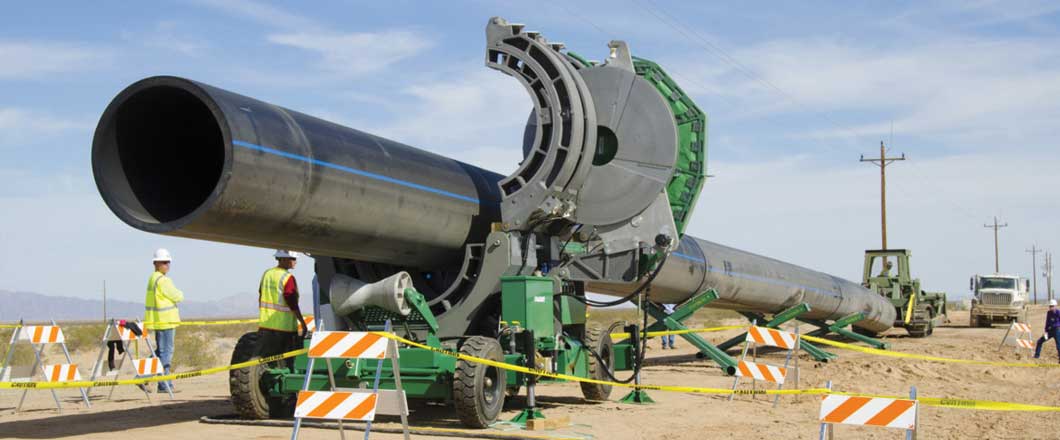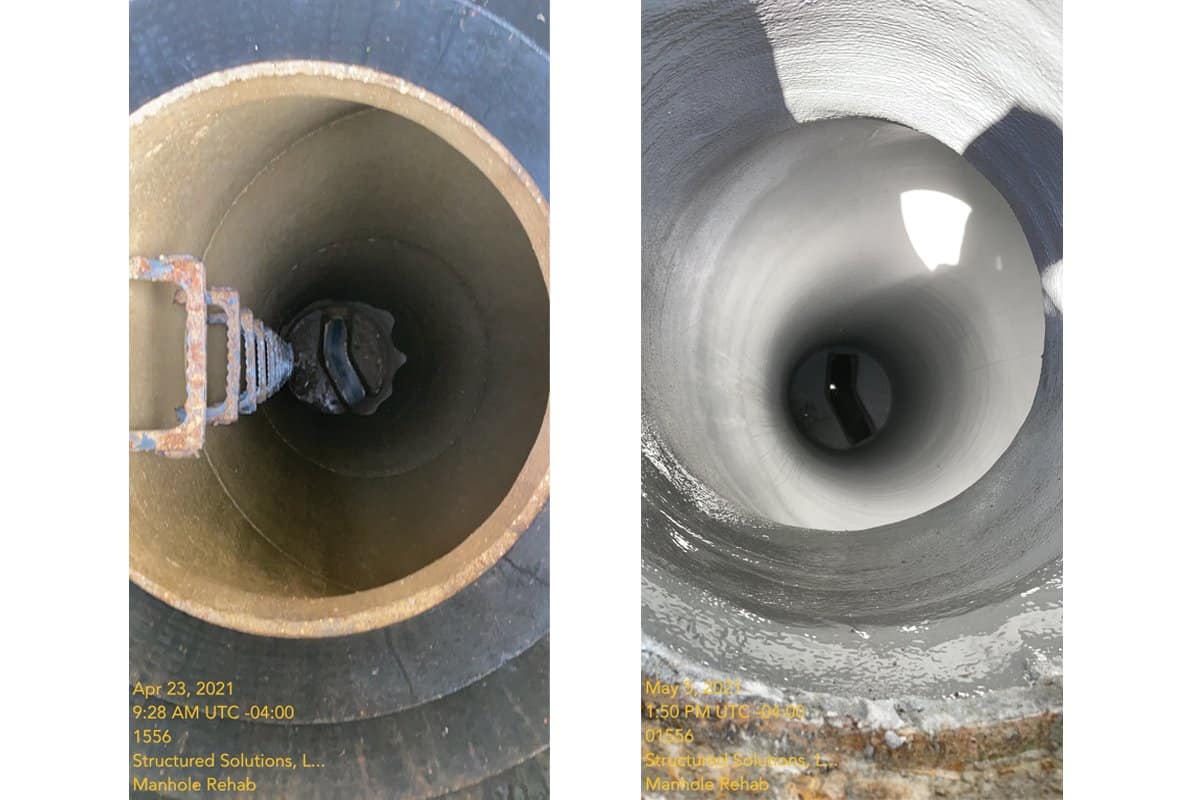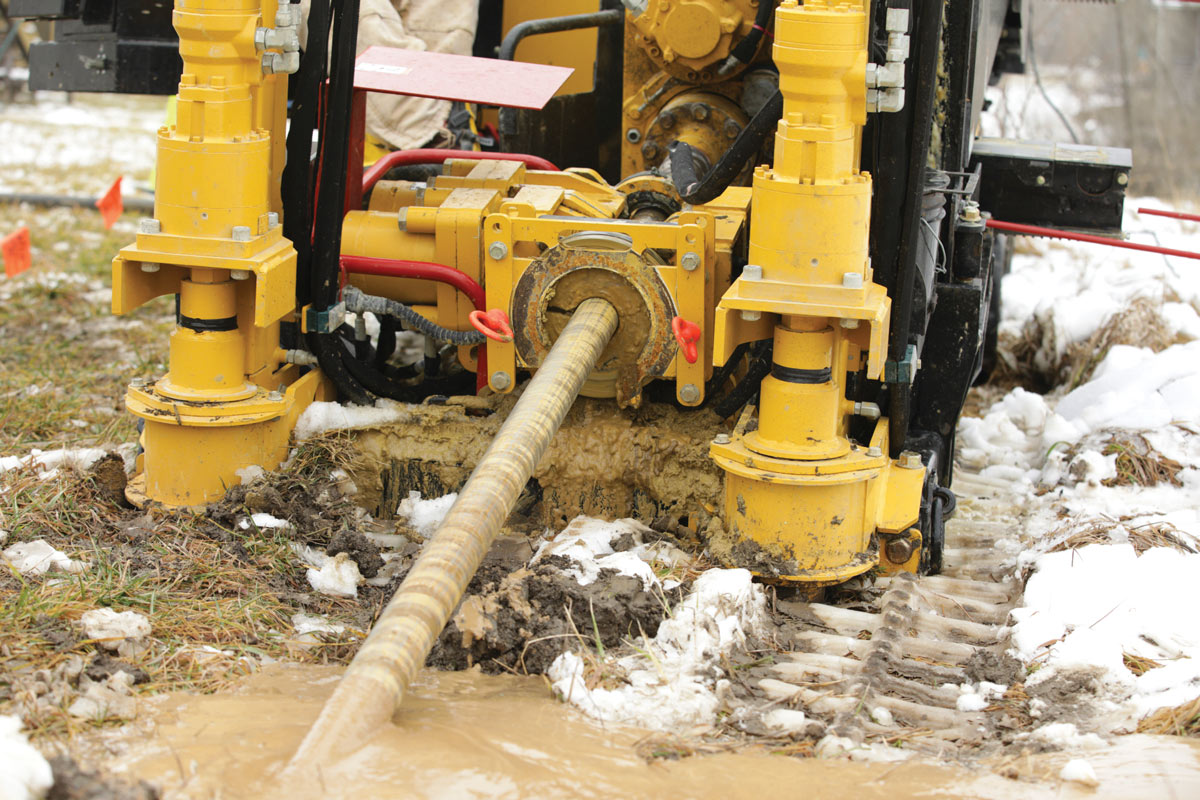
Fusing Large Diameter Pipe? We Have you Covered
As applications grow in size and scope, the methods used to successfully and efficiently fuse HDPE must grow, too. Any pipe with a diameter larger than 24 in. is considered large-diameter, and while the fusion procedure is the same as it would be for smaller applications, the sheer size of the pipe means some parts of the process will look a little bit different.
Preparation
When fusing large-diameter pipe, everything must be bigger, from fusion equipment to pipe stands to the machine used to move the pipe from one location to another. Consider logistics – is there a stretch of level ground where the pipe can be kept as level as possible while feeding through the jaws of the fusion machine? If using pipe stands, how large do they need to be to accommodate the pipe itself? And how large does the trench need to be? These are all questions that must be asked before the job has even begun.

Other considerations include determining how close the fusion machine will be to the supply of pipe. If each stick of pipe needs to be relocated between fusions, more machinery may be required for pipe loading and transport from a staging area.
Fusion standards are available for pipe with a diameter of 24 in. and larger and are outlined in many internationally-recognized procedures, including the ASTM F2620. While the task might seem daunting due to the project’s size, it can be made much easier through proper training, jobsite setup, and standards.
RELATED: Atlantic City Not Playing Games with its Wastewater System
Because of the sheer size of many large-diameter applications, training is key to success. Training can be accomplished by reaching out to many of the companies offering pipe, valves, fittings, and fusion machines. A trained and qualified operator can save time, money, and energy in the field.
One of the many benefits to HDPE is its flexibility, whether designing a new system or replacing an old one. Unlike non-flexible, metallic piping systems, HDPE can be bent around obstacles like trees, rocks, buildings, or other immovable terrain.
Fusion equipment needs differ, too, depending on the fusion area. In-ditch options exist that allow for fusion to occur once the pipe is already more or less in place. Fully-contained machines remove the need for an external power supply. Some machines are self-propelled, and others must be manually moved from fusion site to fusion site if the pipe is not being pulled along. Ideally, the fusion machine chosen will be the one that puts the least amount of stress on the pipe joints.

Fusion
As with any HDPE butt fusion, the basic procedure for large-diameter butt fusion is as follows:
- Load the pipe into the fusion machine and clamped in place;
- Face the pipe ends parallel to one another creating a clean and smooth surface to be fused;
- Heat the pipe ends simultaneously, and remove the heater after the proper heating procedure has been followed;
- Push the pipe ends together under pressure;
- Cool the fusion under pressure, in accordance with the fusion standard being used.
The result is a joint that is as strong or stronger than the pipe itself.
The fundamentals for large-diameter fusion with a hydraulic machine are largely the same as their smaller counterparts.
Before beginning the fusion, inspect the machine. Clean the parts of the pipe that will be involved in the fusion or are close to the fusion area. Then load the pipe into the carriage and clamp the jaws.
RELATED: Fusion of Family and Business – McElroy Is Built on Finding a Better Way
Without the right machinery, properly aligning large-diameter pipe can be challenging. Equipment exists to help spin large pipe into the right alignment, and while it’s not necessary to use specialized machines, it can speed up the process.
The pipe ends are faced for alignment and cleanliness. After facing the pipe, the ends should be brought together to check the alignment. If the alignment is not within acceptable parameters per the recognized procedure being used, the pipe ends should be adjusted and, depending on the amount of adjustment required, re-faced.

With larger-sized pipe, drag pressure can impact the amount of fusion pressure necessary for a successful fusion, especially if equipment is not being used to support the pipe as it is moved toward the fusion machine. Drag is measured by bringing both ends of the pipe together in the carriage in heating pressure and recording the amount of pressure needed for the pipe to slowly move.
Using a fusion pressure calculator or a digital app, calculate the necessary pressure for the fusion, taking into account the addition of the drag pressure.
The pipe ends are next heated by making contact with a heater plate in fusion pressure, dropping the pressure down to heating (or drag) pressure, and maintaining contact in heating pressure. The amount of time and temperature needed during the heating phase is outlined in the procedures being used for each particular jobsite. Melt bead standards should also be observed, depending on the fusion standard being used.

After the heat soak phase, remove the heater and bring the pipe ends together under fusion pressure. Properly cooling the joint under pressure is crucial for the integrity of the fusion, and with large diameter pipe the cooling times will be longer.
RELATED: Pipe Fusion in the City of Gold Coast, Australia
With the fusion process complete, there’s still one last thing to address: removing the pipe from the carriage and preparing the end for another fusion. Many high-quality fusion machines include hydraulic pipe lifts on each end of the carriage that allows operators to pull the pipe out of the machine.

If performed correctly, HDPE fusion results in a pipeline that surpasses traditional iron pipe in both longevity and reliability. While metallic systems’ output is expected to reduce over its lifespan through corrosion and tuberculation, service using HDPE is typically unaffected by inner diameter loss. Where welding and bolt-up fusion processes of steel pipe require massive amounts of time, HDPE provides an option that allows for more efficient and secure connections that can last for more than a hundred years.
Larissa Copeland is a public relations specialist with McElroy Mfg.




